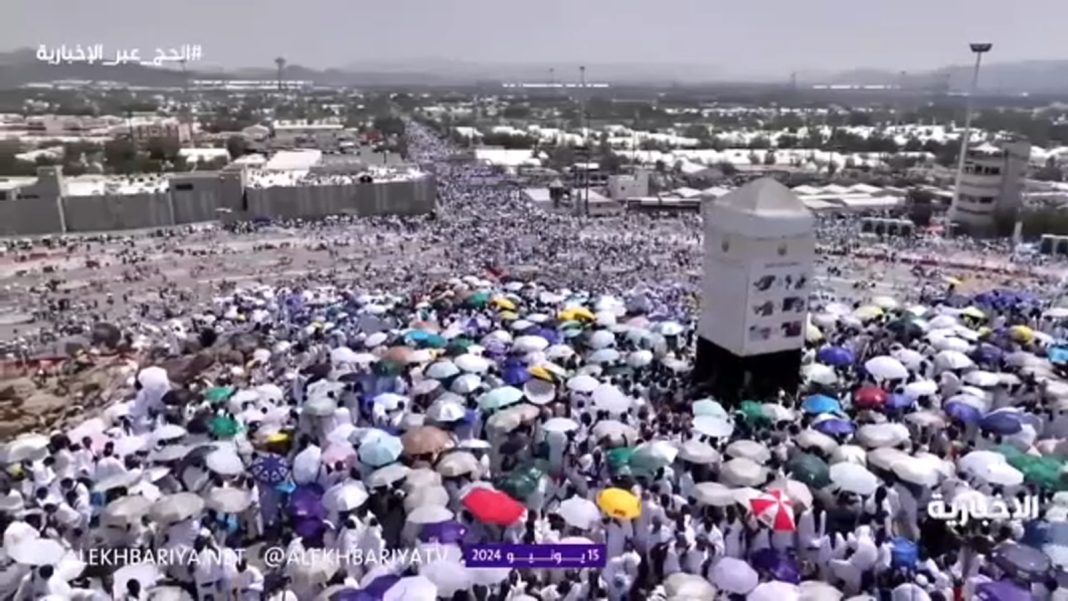Theme: High Fatality Rate and Unauthorized Pilgrims
The annual Hajj pilgrimage in Saudi Arabia, one of the largest religious gatherings in the world, has unfortunately been marred by a high number of fatalities this year. According to the Saudi Health Minister Fahd bin Abdurrahman Al-Jalajel, over 1,300 people lost their lives during the pilgrimage due to extreme high temperatures. Of these fatalities, a staggering 83% were unauthorized pilgrims who braved the scorching heat to perform the Hajj rituals in and around the holy city of Mecca.
The unauthorized pilgrims faced numerous challenges, including walking long distances in soaring temperatures without proper identification documents. As a result, the identification process for the deceased was delayed. Many of the dead were buried in Mecca without a breakdown of their nationalities. However, it has been reported that more than 660 Egyptians were among the victims. The Egyptian government has taken action against travel agencies that facilitated the travel of unauthorized pilgrims, revoking the licenses of 16 such agencies.
Despite efforts by Saudi authorities to crack down on unauthorized pilgrims and expel them from the holy sites, many managed to reach Mecca and its surroundings, primarily on foot. Unlike authorized pilgrims who had access to hotels for shelter from the scorching heat, these unauthorized pilgrims were left exposed. The lack of proper services and visas that did not allow travel to Mecca resulted in a dire situation for these individuals.
Insight: Unprecedented Fatality Rate
While deaths during the Hajj are not uncommon, this year’s tally stands out as unusually high. The exceptionally high number of fatalities suggests exceptional circumstances. In 2015, a stampede in Mina resulted in over 2,400 deaths, making it the deadliest incident in Hajj history. Additionally, a crane collapse at Mecca’s Grand Mosque earlier that same year claimed 111 lives. The second-deadliest incident occurred in 1990, with a stampede that killed 1,426 people.
The Role of Extreme Heat
Though the causes of death have not been independently confirmed, some countries, including Jordan and Tunisia, attribute the fatalities to the soaring heat. Pilgrims were seen fainting, vomiting, and collapsing from the scorching temperatures, particularly on the second and third days of the Hajj. During this year’s pilgrimage, daily high temperatures reached as high as 49 degrees Celsius (120 degrees Fahrenheit) in Mecca and the sacred sites nearby. These extreme temperatures posed a significant risk to the health and well-being of the pilgrims.
Insight: Climate Change and Future Risks
Concerns have been raised regarding the potential impact of climate change on future Hajj pilgrimages. A study conducted by experts at the Massachusetts Institute of Technology in 2019 highlighted that even with successful efforts to mitigate climate change, the Hajj would face temperatures exceeding an “extreme danger threshold” during specific periods. From 2047 to 2052 and again from 2079 to 2086, the Hajj would be held in temperatures that pose a significant risk to the safety of pilgrims.
The Future of the Hajj
The Hajj follows a lunar calendar, causing it to occur approximately 11 days earlier each year. By 2029, the pilgrimage will be in April, and in subsequent years, it will take place during the winter months when temperatures are milder. This shift may alleviate some of the risks associated with extreme heat during the Hajj.
Authorities in Saudi Arabia have invested billions of dollars in crowd control and safety measures to ensure the well-being of pilgrims. However, the sheer number of participants makes it challenging to guarantee their safety. It is vital for Saudi authorities and international organizations to continue working together to enhance safety protocols and provide adequate support for all pilgrims, authorized or unauthorized, to prevent such tragic incidents from occurring in the future.
In conclusion, the high fatality rate during this year’s Hajj pilgrimage in Saudi Arabia highlights the risks faced by unauthorized pilgrims, particularly due to extreme high temperatures. The significant number of unauthorized pilgrims who managed to reach Mecca despite efforts to crack down on them raises concerns about the effectiveness of current measures. The impact of climate change on future Hajj pilgrimages further emphasizes the need for sustained efforts to ensure the safety and well-being of all participants. By implementing enhanced safety protocols and providing comprehensive support, authorities can strive to make the Hajj a safer experience for all.


